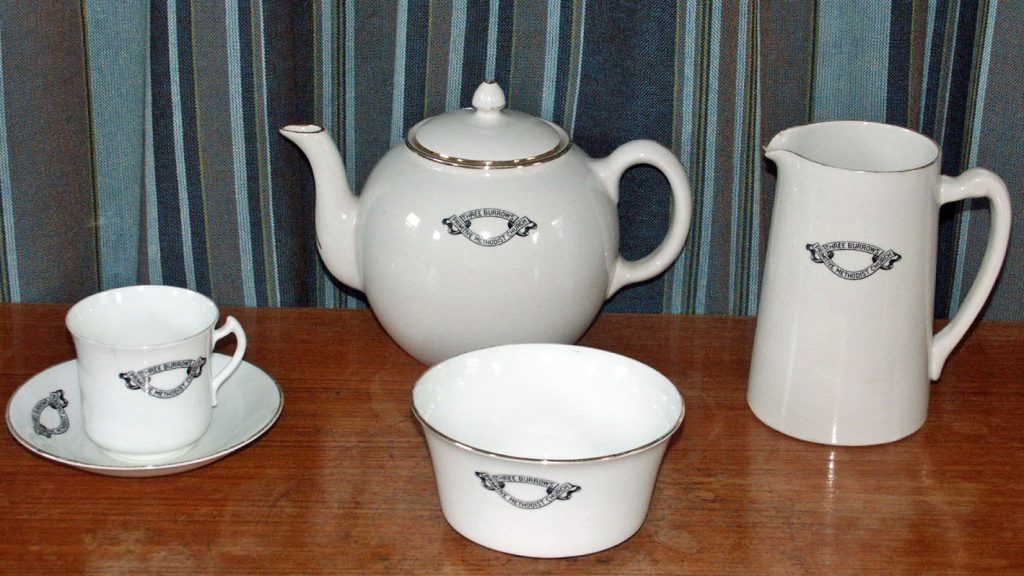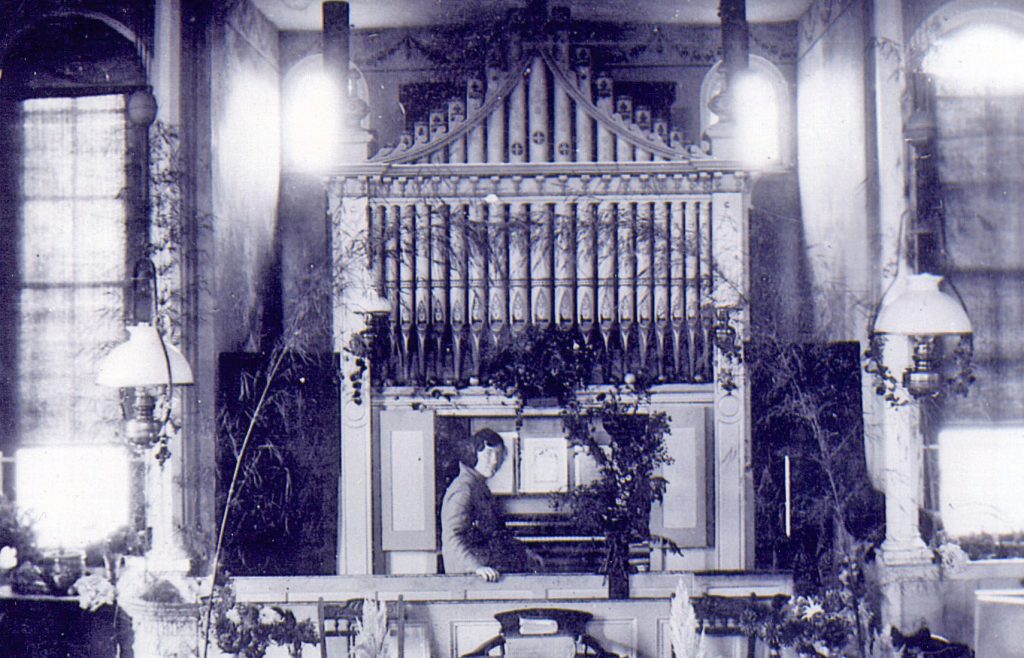Mapping Methodism – Three Burrows Wesleyan / Primitive Methodist Chapel
Categories Mapping Methodism3 Comments
Three Burrows is a scattered community near Chiverton Roundabout, north-east of Blackwater. The original denomination of the Methodist chapel was Wesleyan but just a few years later it was taken over by the Primitives. This profile has been compiled by Clive Benney & Tony Mansell.
1812: Wesleyan Chapel built.
Probably 1828: “Here the Primitives took over a chapel which originally belonged to the Wesleyans, who built it in 1812, and it was situated on the site of the [later] Sunday School at the back of the [1859] chapel”. (J C C Probert)
Probably 1828: The first account of Three Burrows being Primitive Methodist was when Cornwall was split into five branches: Plymouth, St Austle, Redruth, Falmouth and Penzance.
March 1833: The Redruth Circuit Quarterly Meeting passed a resolution, “That a pint of beer and a pennyworth of bread be allowed to every preacher planned at Three Burrows”. (J C C Probert)
It seems that the original deed was rather poorly written and that it made no mention that the building’s use was to be restricted to a Christian denomination.
1844: An old building (presumably the 1812 chapel) and wasteland on Penstraze Moor near Honey’s Tenement was purchased by three tinners: William Hoar, James Tonking and William James. The lease was secured against the life of a son of each of them.
1858: The Redruth Branch was divided, and Three Burrows was placed in a circuit with St Day at its head. Notwithstanding that, Three Burrows seems to have made the largest financial contribution and to have had most members.
1859: A new chapel was built down a narrow lane on the left between Chiverton Roundabout and the top of Blackwater Hill.
The cobbled path leading to the chapel was laid out in a pattern so that the stones read, “No Cross, No Crown”.
 The 1859 Chapel (Photo: courtesy Tony Mansell)
The 1859 Chapel (Photo: courtesy Tony Mansell)
1865: Class leaders: Mark Truan, Jas. Cocking, Jas. Barrett, John Woodley, Wm H Rowe and Wm Cocking (J C C Probert)
1870: Gallery built at a cost of £140 lent by Mary Ann Tresize.
1873: Pews replaced the old benches.
1883: The job of the cleaner was to, “Wash the chapel floor every three months, light the lamps whenever required, attend to the wicks and put oil in the vessels”. (Mr D Moyle in the Blackwater Women’s Institute book of 1951)
1884: The chapel was reopened following renovation and a bazaar held in the nearby carpenter’s workshop belonging to Mr T Sampson.
A Sunday school was built at the rear of the chapel, the stone coming from Mount Hawke and the slate from Devoran.
1892: The Sunday school opened.
1892: The trustees were James Moyle (mine agent), Stephen Manuel (lawyer), Thomas Sampson (carpenter), Joseph Hooper and Jas. Lanyon (grocers), William Hoare (miner) and John Wesley (trader).
December 1918: The first marriage to be performed at the chapel was between Ernest James Roberts and Gladys Bown.

The Sunday School attendance record from 1909 to the late 1950s provides us with a host of familiar local names. It records the officers, teachers and pupils and the various classes into which the school was divided. (Blackwater Women’s Institute book of 1951)

1933: Those with most attendances in the 1st class were N Oates (18 times in six months), W Mugford (14), Muriel Julian (14) and Betty Mitchell (13); in the 2nd class, Joan Mitchell excelled with 22 attendances. The names of Jennie Hosking, Brian Cock and Ronald Mitchell appear as do the family names of Ward, Sandow, Glasson, Roberts, Pearce, Gill, Locke, Richards, Williams and a host of others.
Until the 1940s: John Roberts (“Ganger” Roberts) of Three Burrows was organist during which time he also played at Blackwater Wesleyan Chapel.
1977: The chapel closed and was converted into dwellings.

Thank you Tony Mansell. So fascinating bringing back so many childhood memories. Lots of familiar names
Thank you Sandra. As you obviously lived in this area, as did I, I wonder if we know each other.
Maybe, I was Sandra Oates friend of Lesley Hoskin of Silverwell. Can’t remember the name of the farm
I went to Blackwater School 1955 to 1961 when the 3 teachers were Miss Jane, Mrs Davey and Mr Best
I lived at ThreeBurrows near Linda Chapman, Nigel SPARGO etc